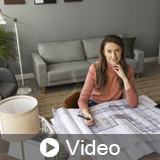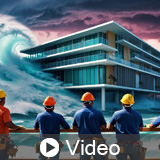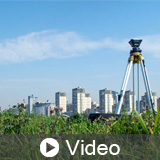Tara Blank has a doctorate in biology with an emphasis in environmental toxicology. She collaborates with design professionals, building product manufacturers, scientists and researchers, and sustainability advocates. Tara is a long-time contributor to the Health Product Declaration Collaborative (HPDC), having served for several years as Chair of the Content Inventory Technical Sub-Group, and as a member of the Third-Party Verification and Supply Chain Technical Sub-Groups. She also works closely with the mindful MATERIALS Collaborative having been a Member-Owner and Legal Manager. With her exceptional attention to detail and years of experience managing large projects, you can trust that Tara will work closely with your team to produce the highest quality HPDs, Declare labels, and other sustainability documentation for your building products.

Elixir Environmental works with building product manufacturers to develop transparency documentation for material ingredient reporting, including Health Product Declarations (HPD). HPDs help contribute points under LEED v4. Product declarations offer your customers an unsurpassed level of transparency, can validate claims of your product's contents, and increase the chances of your building product getting specified.
Our Course Instructor(s)
Take One Of Our Online Course(s) Now!
|
Many low-income communities have sites that are vacant or underutilized because of perceived stigmas or economic barriers. Building a project on a high-priority redevelopment site can revitalize the neighborhood and bring social and economic benefits to the surrounding community. In this course we explain how to achieve the LEED v4.1 BD+C High-Priority Site and Equitable Development credit. Our team discusses how the redevelopment of contaminated sites can improve environmental health.
$45.00 |
|
Join us for an inspiring journey as we explore real-world examples of LEED certified projects that are reshaping our built environment and combating climate change. Through a series of captivating case studies, you'll discover how innovative strategies are dramatically reducing energy and water consumption, creating healthier and more productive spaces for occupants, and paving the way for a more sustainable future. From towering skyscrapers to university centers, each project tells a unique story of environmental stewardship.
$45.00 |
|
A century ago, everyone could look up and see a spectacular starry night sky. Now, millions of people across the planet will never experience the majestic night sky where they live. The widespread use of artificial light at night is not only impairing our view of the universe, it negatively affects our environment, our safety, our energy consumption, and our health. Light pollution creates an abundance of environmental problems. Wildlife species that hunt or forage at night may be unable to feed.
$45.00 |
|
Is Phoenix on the brink of a desert apocalypse, where relentless heat, dwindling water supplies, and raging wildfires could transform this vibrant city into an uninhabitable wasteland? Explore the critical intersection of climate change, urban design, and sustainability in this course focused on the future of desert metropolises. Using Phoenix, Arizona as a compelling case study, we'll examine the complex challenges facing arid urban environments and innovative solutions to address them.
$45.00 |
|
In the heart of Los Angeles, where the skyline meets the unpredictable forces of nature, a battle is brewing against earthquakes, wildfires, mudslides, and more. As the city grapples with the looming threats of drought, smog, and power grid failures, design professionals are stepping up to create resilient buildings that can withstand the chaos. In this course, we discuss LEED v4.1 BD+C strategies to protect occupants and promote urban safety.
$45.00 |
|
Protecting wildlife and preserving it for future generations is critical. Our planet desperately needs to be safeguarded, with climate change already wreaking havoc on our natural environment. In this course, we describe how to achieve the LEED v4.1 BD+C Protect or Restore Habitat credit and reduce environmental impacts for building sites. We explore how design professionals can preserve high-quality native ecosystems, including their soils, native vegetation, sensitive species habitat, wildlife corridors, and hydrology.
$45.00 |
|
The LEED v4.1 Materials and Resources (MR) credit category focuses on minimizing the embodied energy and other impacts associated with the extraction, processing, transport, maintenance, and disposal of building materials. The requirements are designed to support a life-cycle approach that improves performance and promotes resource efficiency. In this course, we explore the prerequisites and credits in the LEED v4.1 BD+C Materials and Resources category and discuss how they promote sustainable design for projects.
$45.00 |
|
In this course, we explore how Health Product Declarations (HPDs) contribute to the LEED v4.1 rating system. Our team discusses how design professionals can achieve the LEED v4.1 BD+C and ID+C Material Ingredients credit. In addition, we review the HPD Open Standard and discuss how it can influence design professionals to make healthier material selections for buildings.
$45.00 |
|
Have you ever wondered about the untapped potential of esoteric design strategies in shaping the future of sustainable architecture? What design strategies are innovators, disruptors, and mavericks using to advance sustainable design? In this course we explore uncommon LEED v4.1 BD+C pilot credits and review how projects may register for pilot credits and pilot ACPs. Finally, we examine strategies that diverge from the status quo and help design professionals think out of the box to explore new ideas about sustainable design.
$45.00 |
|
Imagine this scenario: skyscrapers that breathe sustainability, neighborhoods that pulsate with community vibrancy, and cities that hum with innovation. This is the future we envision. Through a captivating blend of in-depth case studies, insightful analyses of proven practices, and visionary examination of cutting-edge ideas, we'll uncover strategies to transform the built environment using LEED. From pioneering sustainable infrastructure to office renovations, every lesson is a step closer to unlocking the potential of our cities.
$45.00 |
|
Noise can negatively affect human health and productivity in the workplace. Poor acoustic performance can critically affect learning in schools and impact healing at healthcare facilities. It is imperative that design professionals balance acoustical design strategies when planning systems and indoor spaces. In this presentation, we discuss the intent and requirements for the LEED v4.1 BD+C and ID+C Credit: Acoustic Performance and how they can help building occupants.
$45.00 |
|
As severe weather events and rising sea levels threaten to reshape our coastlines and devastate communities, our team discusses cutting-edge strategies to create resilient, sustainable structures that can withstand nature's fury. We explore LEED v4.1's robust framework for climate-adaptive design, exploring innovative techniques for flood mitigation and storm-resistant construction. Our team utilizes Florida as a pivotal case study to illustrate the devastating impacts of extreme weather events and to explore innovative solutions for future resilience.
$45.00 |
|
A LEED site assessment evaluates environmental features that the design of a sustainable site and building should take into consideration. A well-developed assessment conducted before or during the conceptual design phase may reduce project costs and risks, promote occupants’ health, and honor a site’s unique characteristics. In this course we describe how project teams can achieve the LEED v4.1 BD+C Site Assessment credit and review resources that can help design professionals meet their goals.
$45.00 |
|
In this course, we review the intent and applications for prerequisites and credits for the LEED v4.1 BD+C EQ category. We discover strategies to designing healthier spaces by improving indoor environmental quality for occupants. We discuss how indoor environmental quality can improve human health and well-being, worker productivity, and occupant comfort.
$45.00 |
|
Building occupants who can visually connect with outdoor environments while performing everyday tasks experience greater satisfaction, attentiveness, and productivity. In healthcare facilities, providing patients with views and access to nature can shorten hospital stays and reduce stress, depression, and the use of pain medication. Designing for quality views involves consideration of building orientation and site design, facade, and interior layout.
$45.00 |




















